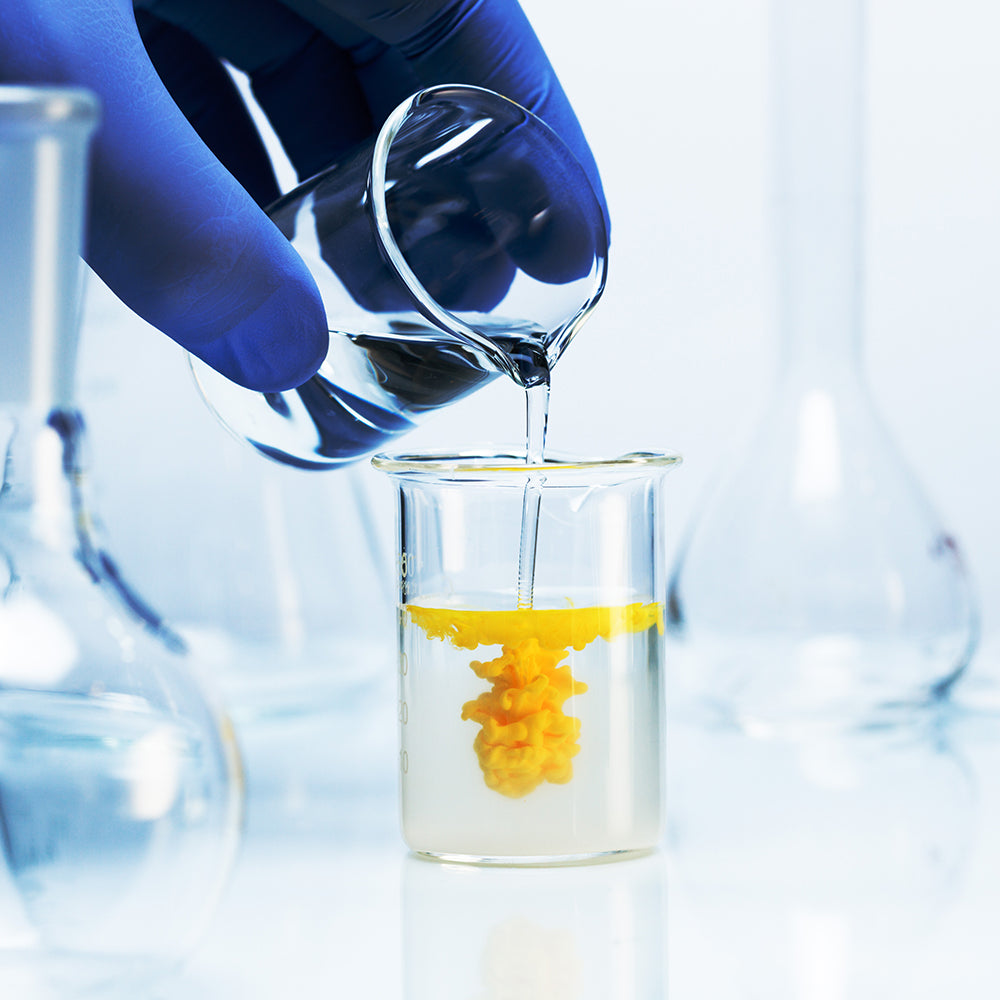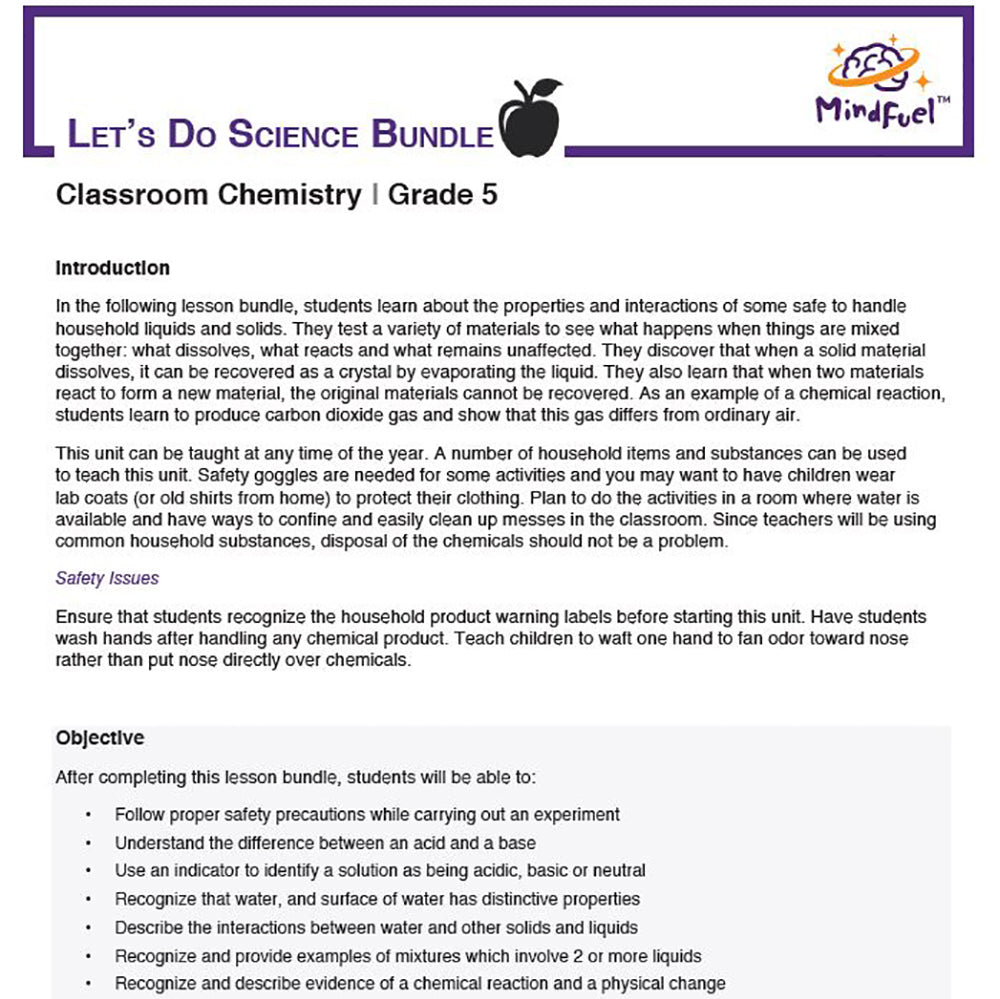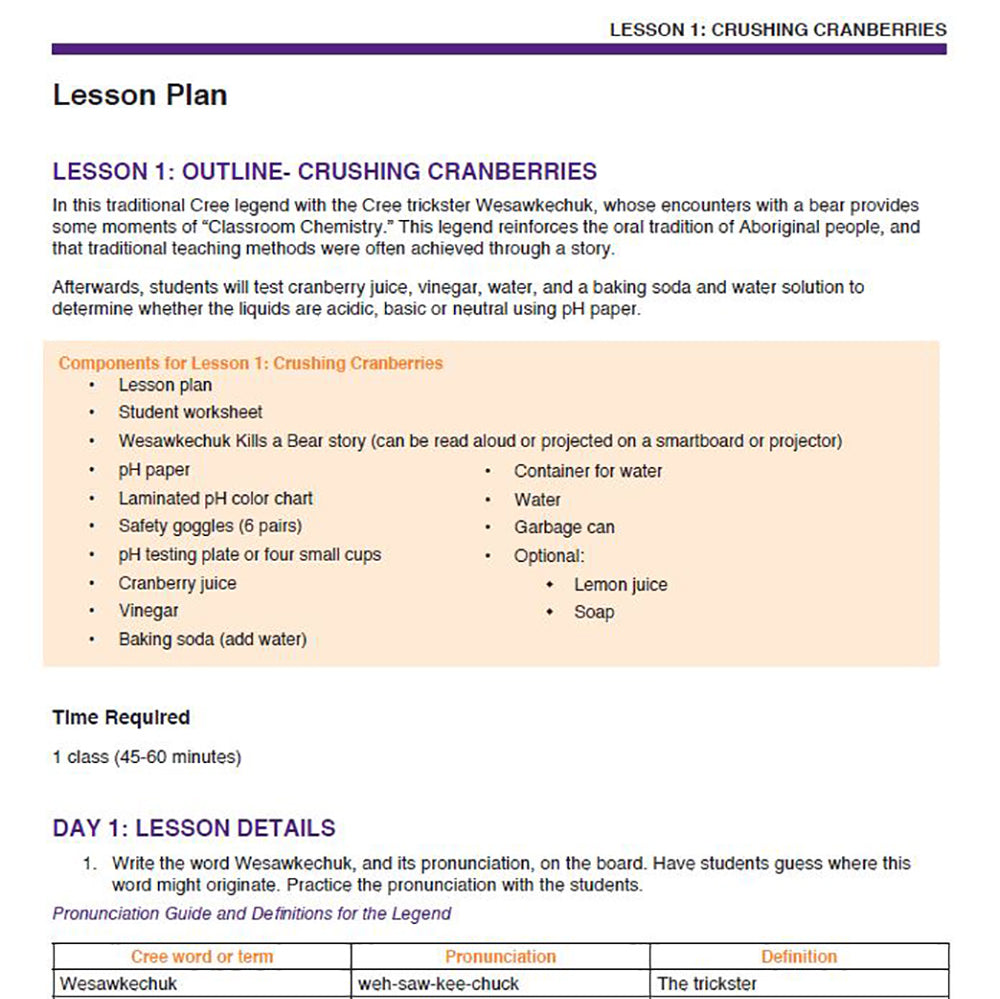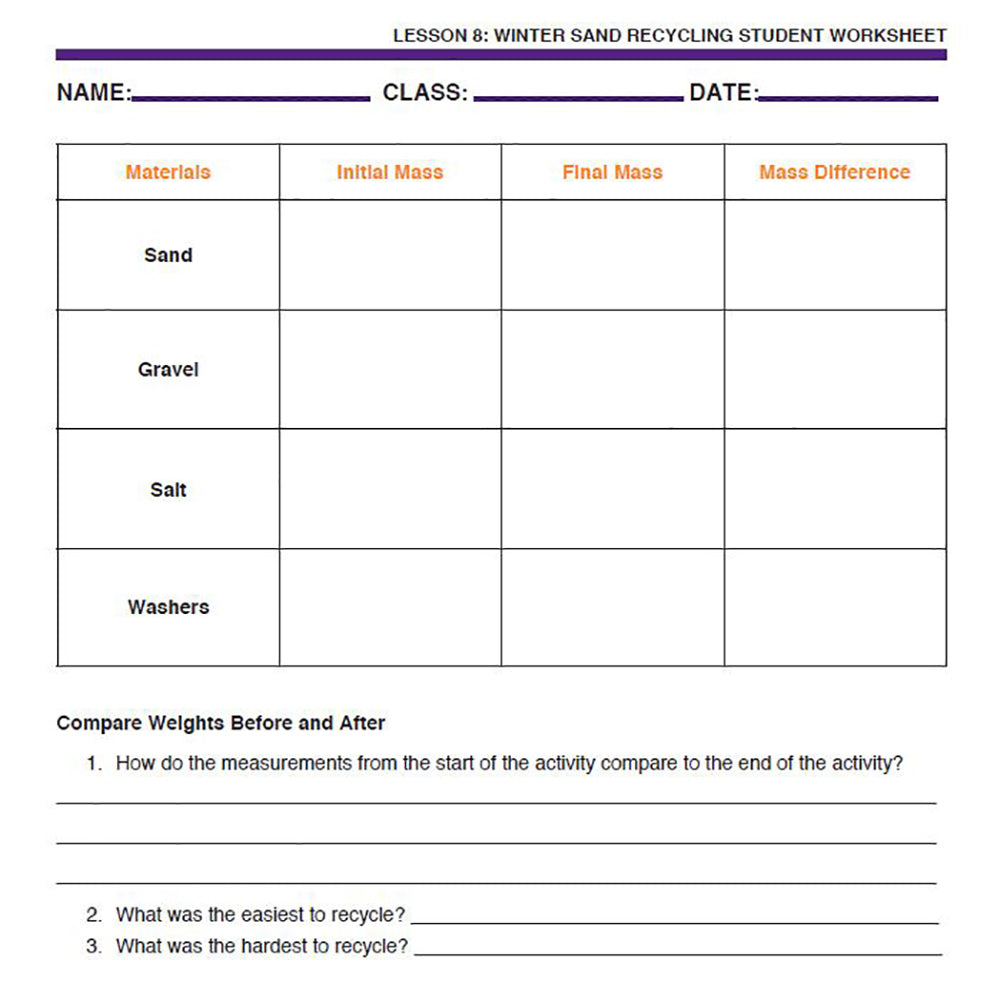1
/
of
6
MindFuel
Classroom Chemistry - Let's Do Science Bundle
Classroom Chemistry - Let's Do Science Bundle
Regular price
$19.19 USD
Regular price
$23.99 USD
Sale price
$19.19 USD
Quantity
Couldn't load pickup availability
Downloadable (1 PDF - 81 pages)
The following activities are included in this guide. The list is not prescriptive and teachers may select activities that are most appropriate for their students.
| Activity | Overview | Resources Included | Additional Resources Required |
| Lesson: Crushing Cranberries | This traditional Cree legend provides some moments and connections to the concept of “Classroom Chemistry.” This legend reinforces the oral tradition of Aboriginal people, and that traditional teaching methods were often achieved through a story. After gathering background knowledge, students will test the pH of various substances. | Lesson plan Student worksheet Illustrated story |
pH paper Laminated pH color chart Safety goggles (6 pairs) pH testing plate or four small cups Cranberry juice Vinegar Baking soda Container Water Garbage can |
| Lesson: Paddle Your Canoe | Students will attempt to send a tin foil canoe across a pan of water. | Lesson plan Student worksheets x2 |
Container for water Tin foil Liquid soap Scissors Clean water Garbage can |
| Lesson: Water, Water Everywhere | Students will be testing various materials to make a waterproof container | Lesson plan Student worksheet |
Picture of birch tree Vaseline Plasticine Pouring cup Tin foil roaster pan Paper Scotch tape with tape dispenser Popsicle sticks Paper towel (for hands) Water Garbage can |
| Lesson: Evidence of Chemical Reactions | This lesson provides students with a foundation in the basics of chemical reactions and how to identify them. Students will learn that a color change, a temperature change, the evolution of gas, and the formation of a precipitate are all evidence of chemical reactions. | Lesson plan Lab sheet handout Lab instruction Class Exercise Optional challenge activity |
Thermometer Plastic pipettes (optional) Small clear plastic cups Large clear plastic cups Baking soda Calcium carbonate Washing soda (Sodium carbonate) Epsom Salts Citric acid Calcium chloride |
| Lesson: Reversible or Not? | In this lesson students will observe a physical and a chemical change, and will then be tasked with brainstorming ways those reactions could be reversed. | Lesson plan Student worksheet |
Ice cubes (enough for each group plus one) Containers Vinegar Baking soda White board or chart paper with an appropriate marker Access to a freezer |
| Lesson: Lava Lamp | Create your own lava lamp using household ingredients! This hands-on activity introduces a chemical reaction to demonstrate how density of fluids affects their behavior. | Lesson plan Student activity sheet |
Empty plastic bottles (~600mL) Measuring cups Water Food coloring Vegetable oil Alka-seltzer antacid tablet |
| Lesson: Crystal Snowflakes | This science experiment will let students create a snowflake made out of crystals. | Lesson plan Student worksheet |
Table salt (or sugar) String Pipe Cleaners Glass Jars Pencils Boiling Water Food Coloring Scissors Measuring Cups Plastic wrap |
| Lesson: Winter Sand Recycling | Learn how sand and salt used on roads during the winter can be recycled by separating the components of mixtures! This simulation activity separates a particle mixture into its components |
Lesson plan Student worksheet |
Sand Gravel Salt Washers Weigh scales 2 bowls Magnets Sieve, strainer or colanders Mixing spoons Water |
| Lesson: Acids & Bases | Students predict and observe the properties of acidic, basic and neutral solutions. | Lesson plan Student worksheet |
Red cabbage Stove Large pot Dropper(s) At least six different liquids with different pH. Paper cups A waste bucket |
| Lesson: Poinsettia Chemistry | This hands-on activity explores the chemistry of pH using the poinsettia plant. | Lesson plan Student worksheet |
Computer with internet connectivity Projector White board and markers Rubber or nitrile gloves Red leaves of a poinsettia plant 500mL glass jars Small glass containers Scissors Paper towel Q-tips Water Vinegar Baking soda Lemon juice Hairspray or heat protector spray Sprite, Ginger ale or 7-Up Liquid soap Spoon Coffee filters |
Share











